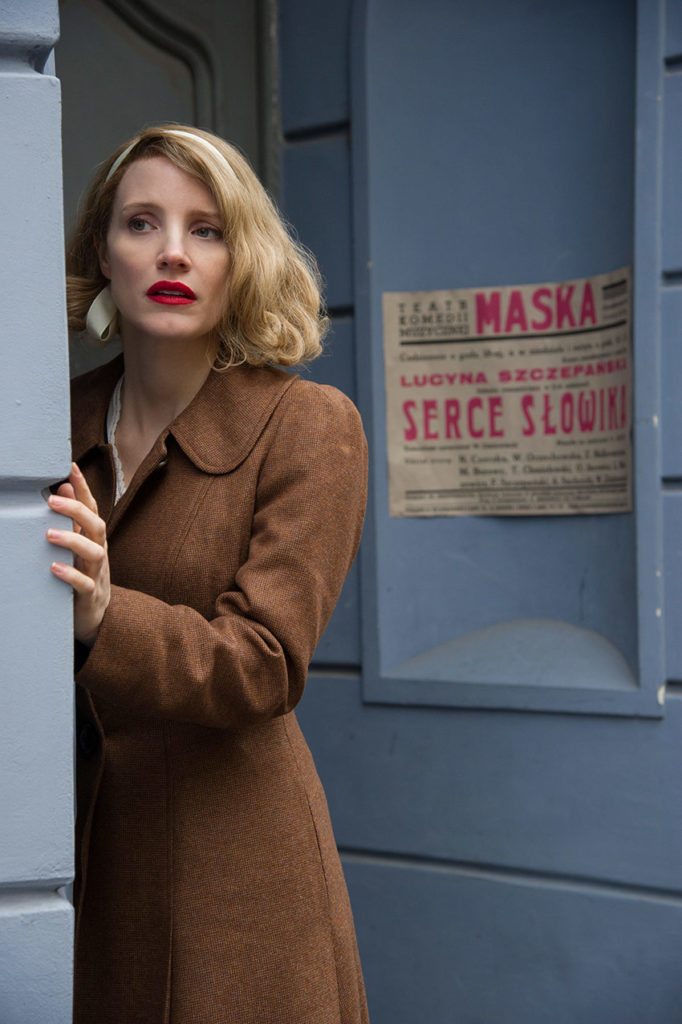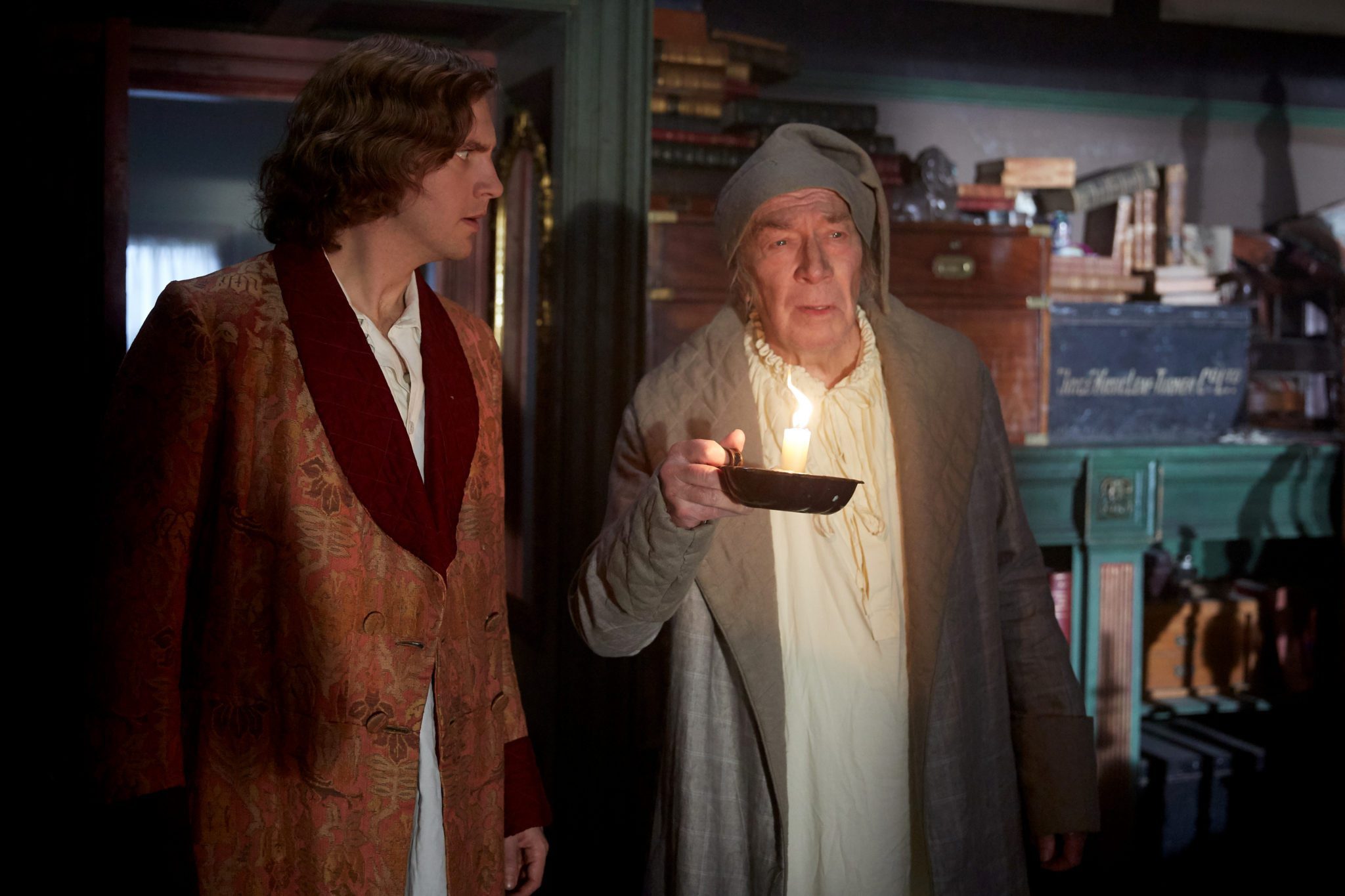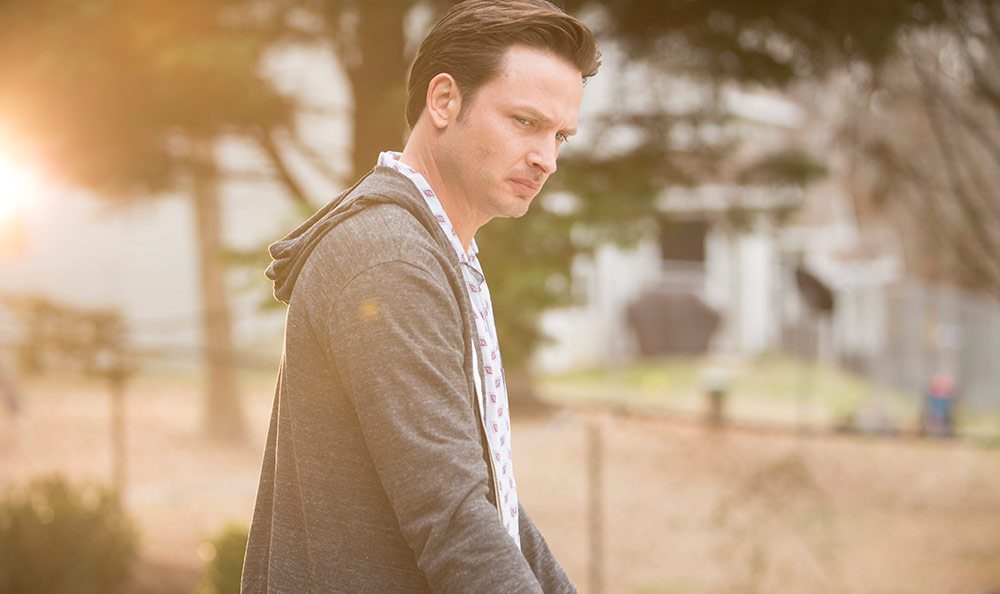?I don?t belong here. They don?t belong here. You don?t belong here.?
The Zookeeper?s Wife opens in an almost Edenic world. Jan (Johan Heldenbergh) and Antonina (Jessica Chastain) Zabinski live on the grounds of the Warsaw Zoo, where Jan is the head zookeeper. Their son sleeps with lion cubs. When Antonina bicycles around the zoo, a young camel runs along with her. It is a happy and carefree existence. Not quite carefree, because war is looming. The serpent of this Eden is Lutz Heck (Daniel Br?hl), the visiting head of the Berlin Zoo. He is obviously taken with Antonina, but claims he isn?t involved in politics.
When Germany invades on September 1, 1938, beginning the Second World War, the zoo is bombed with the rest of Warsaw. Animals are loose and in fear. Many are killed. Soon Heck is back, in an SS uniform, to take control of the animals, to ship the best to Berlin (for ?protection?) and to try to use the zoo?s bison to breed long extinct aurochs (a reminder of the Nazi?s concern with eugenics and scientific exploitation). But soon, the Germans are forcing Jews into the Ghetto, and perhaps worse fates await.
The Zabinskis at first secretly harbor Antonina?s best friend, but as the world inside the Ghetto gets worse, they ask the Germans for permission to use the zoo as a pig farm to feed troops, and to feed the pigs with garbage from the Ghetto. Each day Jan goes to pick up the garbage, and smuggle out some of the Jews who are given refuge in the zoo. Through the years, over 300 persons made their way to the safety of the zoo. The Zambiskis, of course, are risking their lives by doing this. They not only provided safety; they provided friendship and even a bit of culture. Each night after the German guards left the zoo, Antonina would play the piano to let those in hiding know they could come out. That time became almost like an evening salon of conversation and companionship.
The film is based on a book by Diane Ackerman, which is a more extensive telling of the Zabinskis? true story. As is often the case, time constraints require that things are often left out in adaptations of books. Here, we get very brief glimpses of parts of the story, such as Antonina?s pregnancy and Jan?s going off to fight with the Resistance, leaving Antonina alone to deal with their guests.
The Zabinskis? decision to harbor as many Jews as they could was a courageous act?and a very illegal one. They were well aware of the threat that the Germans represented?both to the Jews and to those who harbored them. Yet, for them, the humanity of their neighbors took precedence over the laws that history has shown to be abhorrent. The idea of offering sanctuary to those in danger has a long history?and continues to be a valid question for people today. We live in a world filled with refugees of various kinds. Many have a difficult time finding a safe and welcoming place. More and more nations are closing their borders to those in need?or seeking to deport those already here. Some?including many churches?are seeking ways to provide a haven for those in need and fear. Stories from the Holocaust, like this one, are a reminder of how important those havens are.
Available July 4 on Blu-ray, DVD, and On Demand; available now on Digital HD. Special features include deleted scenes, the making of the film, and a look at the Zabinski family.?
Current EventsDVDFilmReviews








